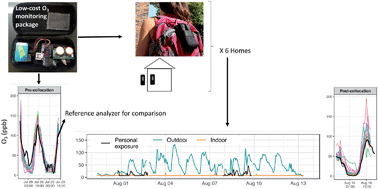Using low-cost sensors to monitor indoor, outdoor, and personal ozone concentrations in Beijing, China
Abstract
High concentrations of ground-level ozone (O3) have been measured outdoors across China but there are limited measurements of O3 in microenvironments, including in homes, and for personal exposure. This highlights the need for cheaper methods to accurately make these measurements and to better capture fine-scale spatial variability in O3 across cities. With this in mind, we conducted a pilot study at six homes in Beijing, China, over 12 days to evaluate the use of portable, low-cost, time-resolved monitors for measuring O3 indoors and outdoors. We also assessed personal exposure for one adult in each home for two 48 hour periods using backpack-mounted monitors. Prior to and following sampling we collocated all monitors with a reference analyzer; we used data from these colocations to generate linear calibrations which we applied to all monitor data. Calibration slopes did not change significantly over the study although some intercepts differed. The average limit of detection (LOD) was 7.0 ppb, average root mean square error was 16.7 ppb, mean absolute error was 13.3 ppb and normalized root mean square error was 33%. Performance varied substantially between sensors, underscoring the importance of monitor-specific calibrations and determinations of measurement error. Outdoor concentrations varied spatially, with home-specific peak hourly averages of 32–165 ppb; indoor concentrations ranged from below the LOD to 15 ppb. Hour-averaged personal exposure was generally higher than O3 indoors, and at times exceeded ambient O3 indicating contributions to personal exposure from ambient sources of O3 away from the home. This work illustrates the feasibility of using these monitors to characterize distributions of O3 spatially and temporally when differences in concentrations are large, and outlines considerations for using these monitors to measure personal exposure.



 Please wait while we load your content...
Please wait while we load your content...